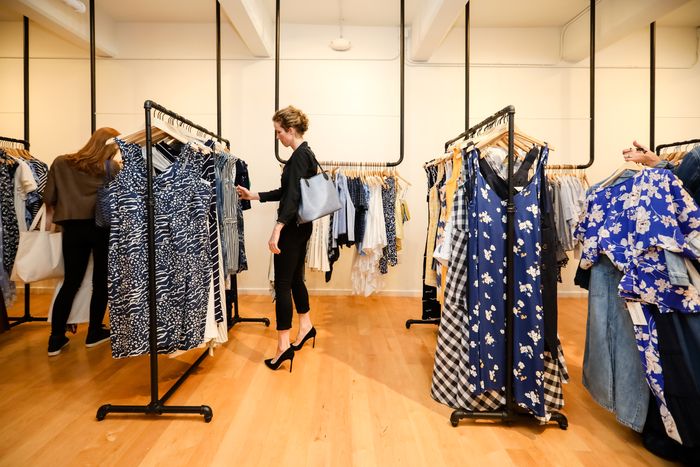Rent the Runway, which has been around since 2009, is on the verge of being acquired by Amazon. The news comes after an intense bidding war with other large retailers that turned into a $US1 billion bid. What does this mean for shareholders of Rent the Runway?
Rent the Runway is a platform that allows women to rent designer dresses and accessories for special events. Unfortunately, listing on the stock market has led to Rent the runway’s inability to make money. The company filed for bankruptcy protection in February 2018 with plans of re-listing on another exchange or using new funding methods such as an initial coin offering (ICO).
Rent the Runway, a company that designs and sells high-end wedding dresses, is a listing to be depreciated. The company has been in business for 10 years and they have not made any profit since 2014.
Rent the Runway Inc. said in a securities filing Monday that it is seeking a fully diluted valuation of up to $1.5 billion, which is roughly half a billion dollars higher than where it was valued in March 2019, before the pandemic temporarily halted the need for any kind of wardrobe other than sweatpants.
Rent the Runway, like so many other firms going public these days, is profitable or unprofitable depending on whatever calculation you employ. “Gross profit minus product depreciation,” it says in its prospectus. The statistic, according to the corporation, is used to determine the amount of cash gross profit available to pay costs, expenses, and capital expenditures.
The calculation is flattering for all seasons, which is convenient. Rent the Runway’s prospectus displays a gross profit margin of 54 percent excluding product depreciation for the fiscal year ending Jan. 31, 2021. Meanwhile, the e-commerce business hasn’t generated money since spring 2019 on adjusted profits before interest, taxes, depreciation, and amortization.
Rent the Runway advertises its business as a “closet on the cloud,” including subscription and one-time garment rentals, as well as a recent resale service. While it is true that the majority of that model enables women to wear anything they want without having to possess it, this term is rather ambiguous. The fashion house combines data and technology to better customize designs for its clients, predict demand for its brands, and increase the lifetime value and return on investment of its own firm. However, the company itself survives outside of the internet’s constraints.
Finally, Rent the Runway is a retailer of real apparel that must be worn. Depreciation—assets that physically travel between time zones and incur physical wear and tear—is an important expense of such a wardrobe. At work, hems are trodden on. At weddings, sequins slip off. Red wine stains almost always.
Rent the Runway’s assets, on the other hand, are undoubtedly depreciating in terms of style. Once an outfit has become declassé, it is unlikely to be leased or resold at the same price. Rent the Runway’s business relies heavily on inventory: According to the firm, it features 18,000 designs from 750 designers in sizes ranging from 00 to 22.
Some organizations in a comparable industry haven’t found the need to provide filtered analytics. Consider Netflix, which, according to Daniel McCarthy, assistant professor of marketing at Emory University’s Goizueta Business School, when it went public in 2002, sold actual DVDs rather than streaming subscriptions. While the CDs depreciated with each transfer of ownership, the company’s S-1 filing only showed unadjusted gross revenues, which increased by 31% between 2000 and 2001.
Rent the Runway, on the other hand, is coming public after a difficult year, urging investors to think about what it can be rather than what it has been. Revenue decreased over 39% and active subscribers fell nearly 59 percent from the previous year to the year ending Jan. 31, 2021, owing mostly to the pandemic.
So, is this a fashion-forward or out-of-style business? Rent the Runway, which was founded more than a decade ago, has a niche market. According to an updated S-1 filing on Monday, the firm had less than 144,000 active and paused customers as of September 30. While Stitch Fix, a newer business that sells new clothes, claims to have more than four million active customers, Rent the Runway claims to have serviced 2.5 million consumers throughout the course of its existence.
Shoppers in San Francisco at the opening of Rent the Runway’s West Coast flagship shop in 2019.
Rent the Runway photo by Kelly Sullivan/Getty Images
A lack of marketing might be one concern. Since its inception, the firm claims to have spent less than 10% of total sales on marketing, indicating that it has grown mostly organically. It shows that just 20% of U.S. women aged 18 to 45 with a family income of $50,000 or more have unaided brand knowledge. If there is widespread interest, this signals a large potential.
Positively, In a late May LinkedIn post, CEO Jennifer Hyman said that active subscribers had increased by 93 percent from the company’s Covid-19 low in May 2020. According to Monday’s updated prospectus, active subscriptions were still down approximately 16 percent from where they were at the end of fiscal 2019.
Rent the Runway, which sells everything from sweatshirts to blazers and trench coats, is set to benefit once offices reopen. However, the likelihood of rapid expansion might create a Catch-22 situation for the corporation. There are only so many individuals who want designer clothes, and introducing more moderately priced options risks alienating those who came to the site particularly to “rent the runway.”
Meanwhile, reselling hasn’t piqued the interest of all investors this year. For example, Poshmark, the recently public social resale site, is down about 76 percent from where it closed on its trading debut in January. One significant distinction is that Rent the Runway owns merchandise, but Poshmark does not.
Investors will ultimately account for it, rest assured.
Stock-Picking Leaderboard Has Been Heard
Laura Forman can be reached at [email protected].
Dow Jones & Company, Inc. All Rights Reserved. Copyright 2021 Dow Jones & Company, Inc. 87990cbe856818d5eddac44c7b1cdeb8

